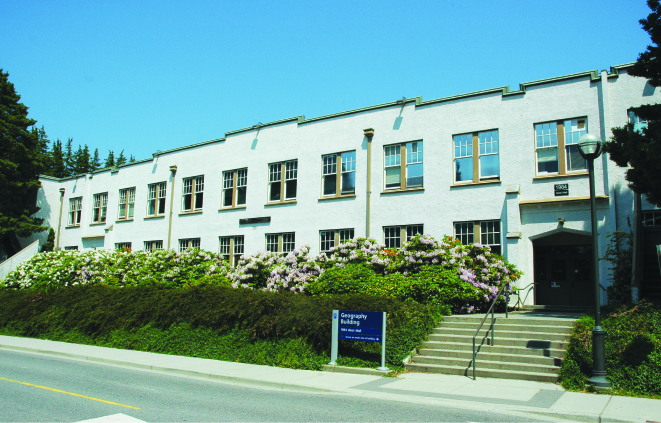

Looking for an exciting course to fill out your schedule? Seats are still available for these Geography courses spanning pressing topics such as the climate emergency; Urban Worlds; Culture, Nature, and Coloniality in Latin America; Analysing Environmental Problems; Environment and Sustainability; and our Changing Environment: Climate and Ecosystems & Water and Landscapes.


Concepts of environment, resources, and sustainability; analytical toolkits to understand the interaction of humans and the nonhuman world; introduction to the management of environment-resource systems.


Climate change is one of the greatest challenges facing humanity. This course provides students with the foundation to understand why scientists are confident that climate change is ~100% caused by human activity, to interpret how climate change affects society, and to participate in conversations about preventing and preparing for future warming.
The first part of the semester is devoted to learning how scientists arrived at such a strong consensus on climate change. We examine the science of the climate system, how scientific knowledge accumulates over time, and why gaps develop between the scientific community and other groups in society. This includes looking at the basic science — the sun and planetary motion affects the Earth’s energy budget, atmospheric composition and radiative forcing, the carbon cycle, global atmospheric and oceanic circulation, and modes of climate variability.
The second part of the semester is devoted more to the interactions between society and the climate. We begin by examining how climate has varied in the past, the effect on human society, and the dark history of climatology as a subject. Then we discuss the current and predicted impacts of climate change on environment and society, the communications challenge, and the politics and economics of addressing climate change.


This problem-based learning course is part of the 3rd year Environment and Sustainability (Geography) curriculum, and introduces students to key concepts and techniques employed in environmental research. Students will develop a core set of qualitative and quantitative research and analytical skills, including data interpretation, life cycle analysis, literature assessments and risk assessment, through three modules focused on present-day challenges related to climate change. Through lectures, in-class activities and assignments, students will gain exposure to the relationships between data, information, knowledge and action in the environmental space. The students will also gain experience using a variety of analytical tools and techniques common in environmental work.


City systems and theories of urban location; internal spatial structure of the city; commercial and industrial location; social areas; neighbourhood and land use change; urban trends and public policy. This is a hybrid course where students work asynchronously on Mondays and attend in-person sessions on campus on Wednesdays.
.


Socio-ecologies in 1491; Spanish colonialism and biological imperialism; contemporary coloniality and neoliberalism; and social movements.


We face many challenges in our world right now, such as climate change, species loss and creating sustainable societies and economies. To solve these problems, we need to fundamentally base our solutions on an understanding of the Earth. And that’s what this course is about – understanding the Earth and how physical processes affect biodiversity (the diversity of life) – and us humans. Climate determines life. We will discuss all the components that combine to create climate patterns, such as the atmosphere, the properties of water and global circulation patterns. We will also discuss how climate change influences climate variables and the implications. Next, we will discuss the Biosphere – the living world. Soils are essential for all terrestrial life – including our agriculture – so our food. Next, we will discuss ecosystems – how the living and non-living world interact to make life possible. Everything is connected – sometimes in surprising ways. Understanding how carbon moves through ecosystems is key to understanding how the Biosphere can store carbon to mitigate climate change. Finally, we discuss biomes – the tremendous diversity of life on Earth and the factors that create that diversity. Hopefully you will appreciate how amazing the natural world is and all the ways we humans could look after our home better. We are all citizens and we all live on Planet Earth.


In this course you are introduced to the study of geology, hydrology and geomorphology. Geology is the science and study of the Earth, its composition, structure, physical properties, history, and the processes that shape it. Hydrology is the study of the movement and distribution of water throughout the Earth and addresses both the hydrologic cycle and water resources. Geomorphology is the study of landforms and the processes that shape them. Together these disciplines encompass most of the processes that impact human societies (such as volcanic eruptions, floods, landslides and droughts), and many of the natural resources upon which modern societies are built.
The main objective of the course is to give you an overview of the processes acting to shape the Earth’s surface, to introduce and illustrate major concepts, and to situate these ideas in the context of environment–society interactions. The topics in this course are important not only to students who are interested in the physical sciences, but those who wish to understand the processes that underlie many human, social and economic aspects of our environment and natural resources. Our goal is to provide you with the concepts and terminology that you need to observe, interpret and understand the landscapes around you and to make these concepts tangible and interesting. In doing so we aim to help you develop your analytical skills (i.e., critical thinking), by building connections between the different concepts and ideas you encounter during the course, and by formulating observation-based hypotheses and speculations.


